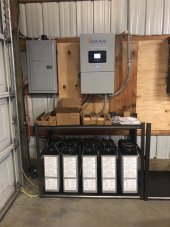SHTF Power Anyway
Power Pig
We recently built a 10kwh system with a Sol-Ark 12 and 4 eFlex batteries. This was a DIY project using equipment put together by NAWS. My husband and his two other electrician friends did not install the Victron Lynx Power In modules (2) that were included in the original order. I did not discover this until we decided to add more panels and batteries. The system has been running just fine without these installed but I'm concerned that they should be there. Thoughts?



